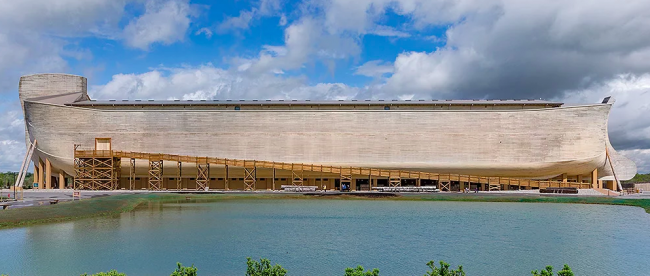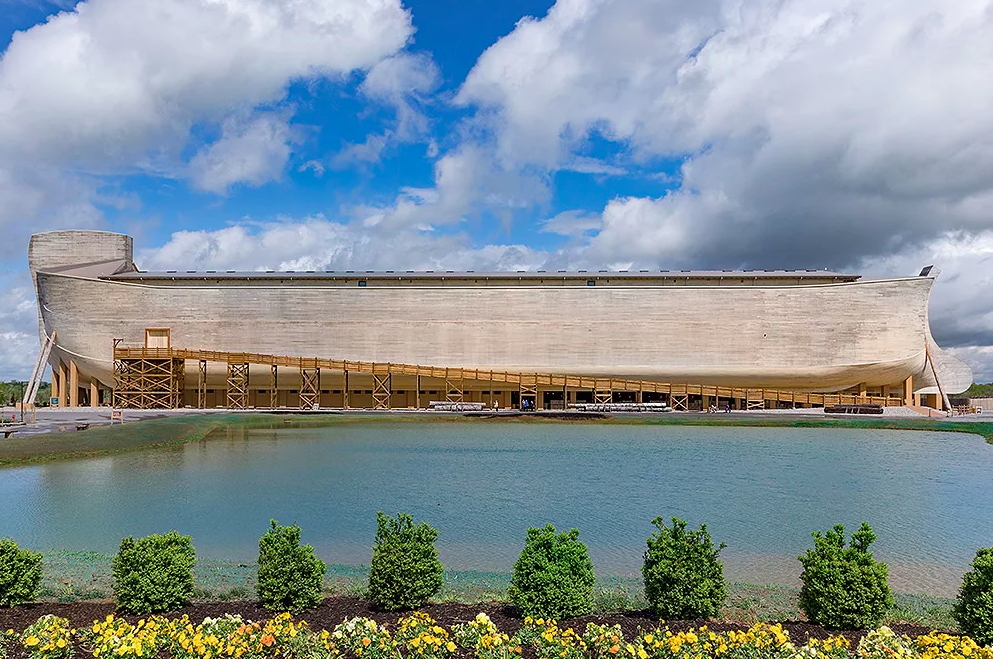The Ark That Went Full Circle

If you decide to go for a drive from Cincinnati, Ohio to Lexington, Kentucky, you’ll likely take Interstate 75 South. And on the way, you’re all but certain to pass through the small city of Williamstown, Kentucky. And up until the summer of 2016, there wasn’t much reason to stop there. While Williamstown is the county seat of Grant County, unless you had some official business there, you’d find yourself without much to do. Only about 3,000 people live there, and while there are some parks and restaurants, there’s not much else.
Until someone went biblical. Literally.

That, pictured above, is an ark — as in Noah’s Ark.
The story of Noah comes from Genesis, the first book of the Judeo-Christian bible. And his ark was designed to do one thing: save the world from lots and lots of rain. The Almighty, seeing that his creation didn’t turn out as planned, decided to hit the reset button by flooding the planet with 40 days of non-stop rain. Noah and his family are allowed to build an ark, one which will keep them safe during the deluge, and are further instructed to bring two of every animal (or more, in cases of kosher animals) on board as well. When the rains stopped, those on the ark were able to disembark safely, restarting the world.
Whether you believe the Genesis flood narrative is up to you, but for some, it’s a divisive issue. For some, the story is too impossible-sounding to be true. For others, the truth of the story is a matter of faith. And then there are the people behind the ark above.
In December of 2010, a group of investors set forth to build a full-scale replica (perhaps that’s not the right word?) of the famous ship from the book of Genesis. The efforts were part business idea, part evangelism; according to USA Today, the investors — who also ran a bible museum elsewhere in Kentucky — wanted “to lend credence to the biblical account of a catastrophic flood and to dispel doubts that Noah could have fit two of every kind of animal onto a 500-foot-long ark.”
Five and a half years later, “Ark Encounter,” as it’s now called, opened its doors. And since then, the park operators claim to have had more than a million visitors to the exhibit. But while the exhibit has been a success on that measure, it definitely has had its problems, too. In one case, irony was on the ship’s manifest.
In the spring of 2019, Ark Encounter’s owners sued their insurance company, arguing that the insurer failed to pay for damage to the site. The issue? Landslides had blocked off parts of the roads, requiring roughly $1 million in repairs. The attraction remained open during the restoration process, so Ark Encounter lost little revenue. But the company still had to pay for the clean-up, and the five insurers all failed to pay anywhere near that.
While the outcome of that lawsuit has gone unreported, the cause of the landslides was reported widely: it rained a lot in Williamstown; much more than anyone had anticipated. In the end, as Slate points out, the faux Noah’s Ark was befuddled — by too much rain.
Bonus fact: The Ark Encounter landslides caused a lot of damage but, thankfully, caused no injuries. The same can’t be said for the 1928 movie “Noah’s Ark.” The movie includes a scene where an actual flood strikes the area, and to create this on film, producers basically created a real-life flood, hiring extras to stand it its path. As Variety notes, “rumor is that three extras were killed,” although we can’t be sure because reconds from the time have not been preserved.
From the Archives: Jólabókaflóð: A different type of flood.
